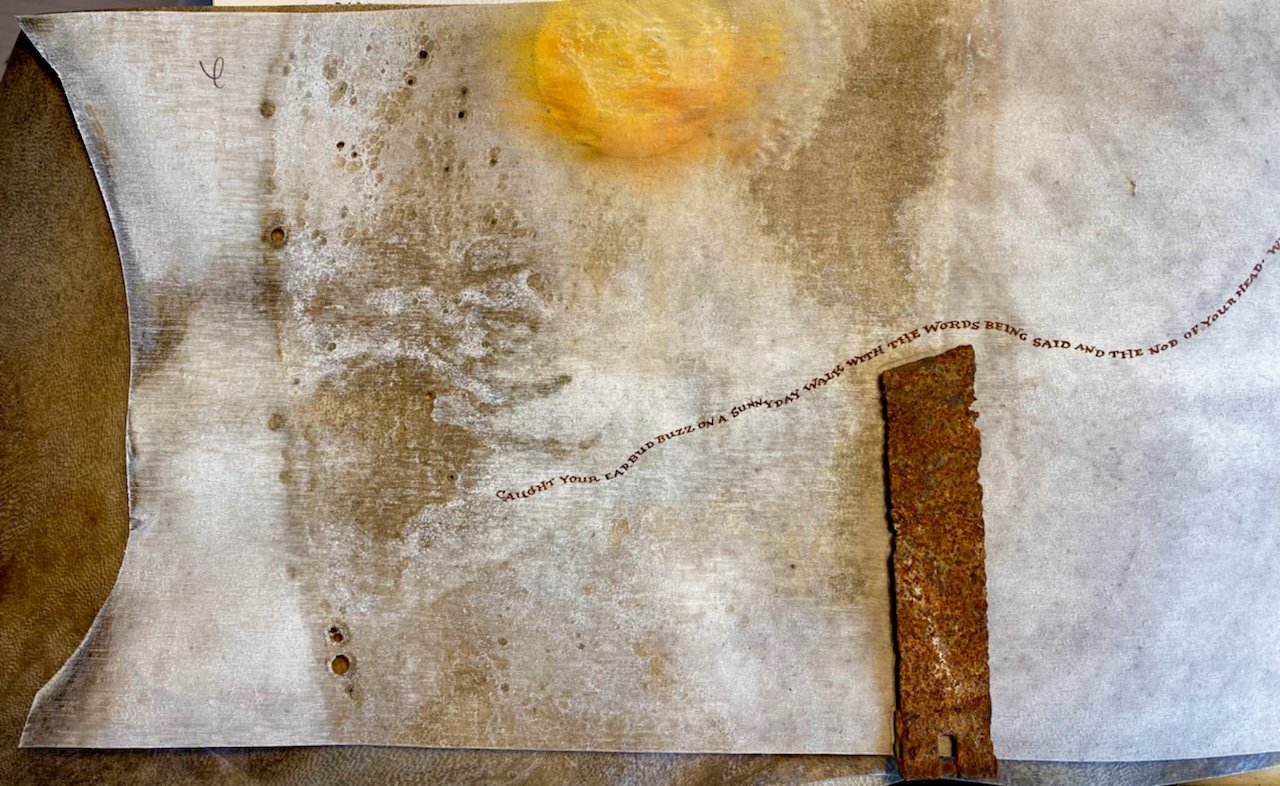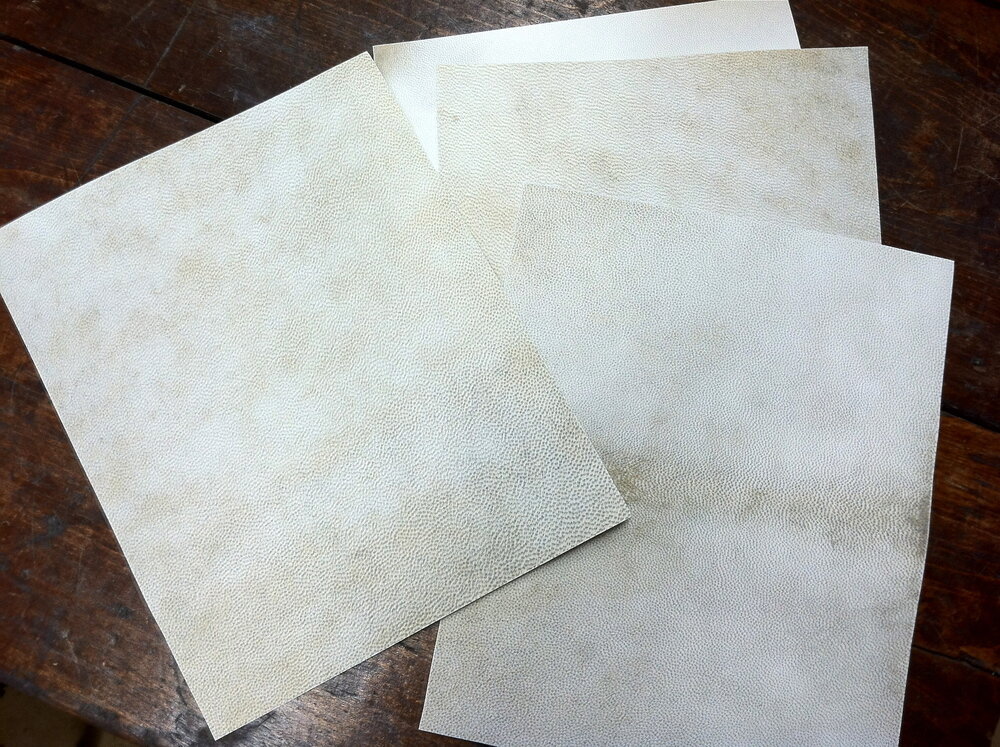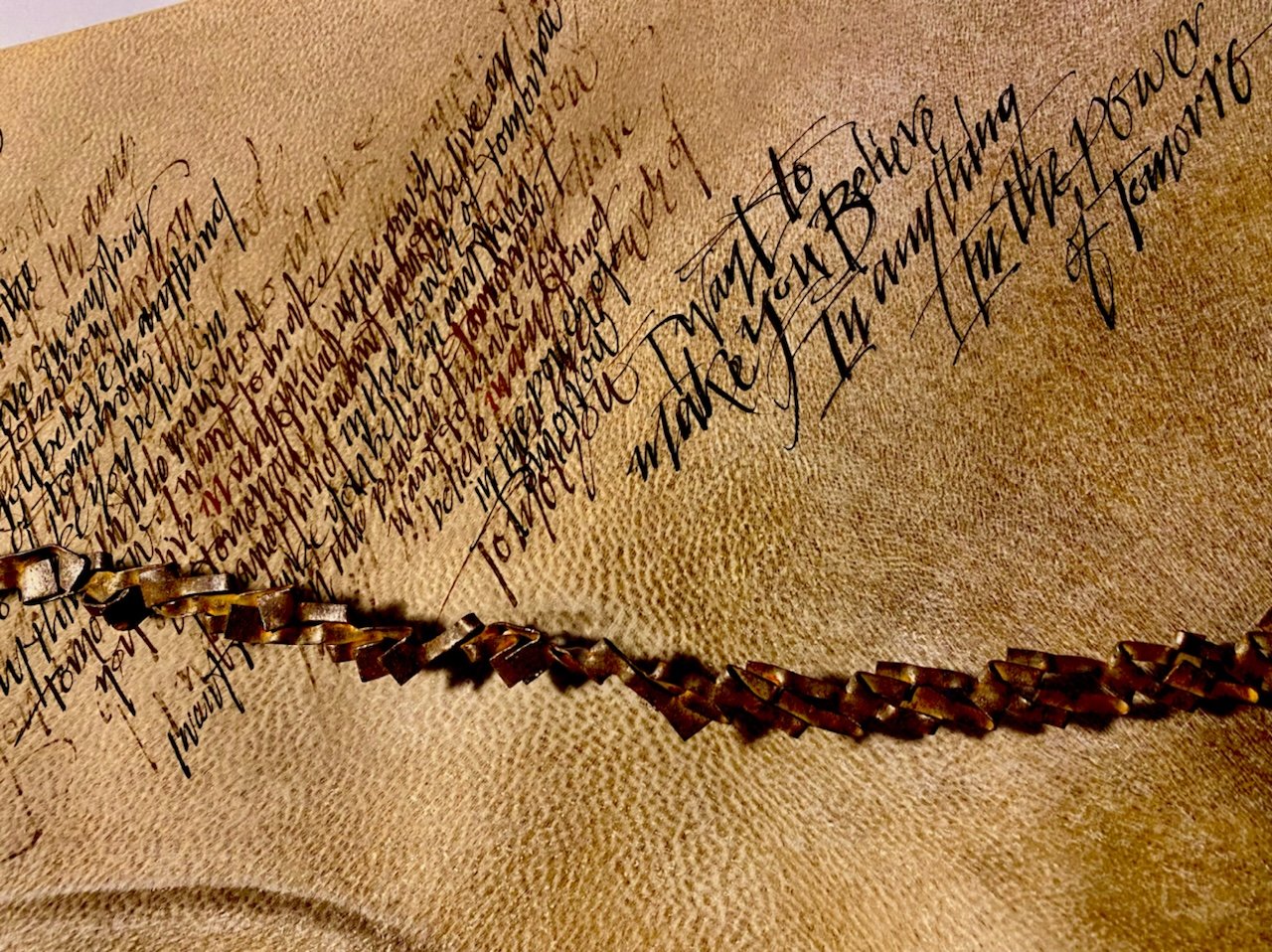What is the difference between parchment, vellum, and leather?
As far as parchment and vellum go, the difference is pretty much semantic at this point in history. The roots of the words come from different sources. Parchment arrived in the English language from the German Perkament, which in turn came from Pergamena in Italian (and before that, Pergamena in Latin). We can reach back even further to the word Pergamon, from antiquity, which referred to the city in Asia Minor where the first records of parchment mass production occurred. These days, parchment generally refers to any animal skin turned into a paper-like material from physical action, including removing extraneous flesh, fat, and hair.
Meanwhile, vellum comes from the Old French word Velin, which means calfskin. Historically, calfskin has been the finest parchment, so people have long referred to refined parchment as vellum. So here’s a simple formula: All vellum is parchment, but not all parchment is vellum.
Leather refers to the same raw material — animal skin — chemically altered to render it impervious to rot. There are many ways to tan a skin, and the resultant leather will vary in characteristics, but it will always stand up to moisture, heat, and mechanical action better than any untanned/raw skin.
How should I store my parchment?
Parchment is not meant to stay flat. It was once wrapped around an animal, and it is only through tremendous stretching and drying of the skin under tension that it reorients the skin fibers into a very thin but very dense skin fiber lattice. Too much environmental moisture and humidity will cause the fiber network to loosen and expand, ultimately warping the parchment until it won't lie flat. Likewise, too dry an environment will cause it to shrink and become stiffer. When the parchment warps, the entire surface will likely move in several directions. We've found the best way to store parchment to keep problems to a minimum is to store it in a stable @ 55% humidity environment and to keep it gently rolled up from head to tail (along the spine direction of the skin). This storage method will cause it to curl, but the curl will at least be predictable in that it will only be in one direction. See the video below for a demonstration of how to flatten your parchment when ready to use it.
















